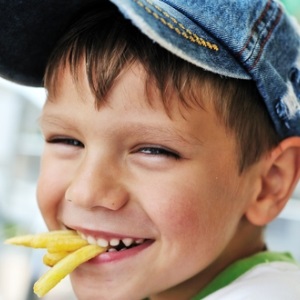
Kids who ride home from school – whether in a car or on a bus – eat more snacks and candy during that window of opportunity than those who get home under their own steam, according to a new U.S. study.
'Active' and 'passive' commuters
The researchers thought that kids who walk or bike to and from school might have more chances to buy junk foods along the way, but found it was the "passive commuters" who rode to or from school that ate more snacks.
Dr. Kristine Madsen at the University of California, Berkley School of Public Health, who led the study of fourth- and fifth-graders, said her team was glad to find that the "active commuters" were not buying more junk food on their way home.
Read: Should government ban junk food?
But the study results suggest "it really is a little more complicated than that," she told Reuters Health. "Because in these younger kids, parents who are picking them up and taking them home are actually probably more likely to stop and get junk than kids who are on their own would."
For their study, published in the Journal of Preventive Medicine, Madsen and her colleagues collected 24-hour dietary surveys from a total of 3,622 fourth and fifth grade students at 44 mostly urban elementary schools in southern California.
They also asked the students how they would get home from school the day of the survey and how they would get to school the next day. The choices included active options such as walking, biking, skating and using a scooter, or passive options such as car or bus rides.
About 23 percent of students actively commuted to school, usually by walking, and 27 percent actively commuted home after school.
Difficult to avoid unhealthy snacks
In general, the morning commute wasn't associated with any differences in snacking or types of food eaten. And for the entire group, the children's mode of commuting wasn't associated with differences in total calorie intake.
However, compared to the active commuters, the passive commuters consumed on average, 78 more calories from purchased foods, most of them snack foods or sweets. Just about all of those empty calories were eaten during the after-school commute.
Madsen said that as a parent, she appreciates how difficult it can be to avoid unhealthy snacks.
"My children love treats and I love to see them happy, and part of the issue is that what kids like is very much influenced by the advertising they see and what's readily available," she said.
Madsen said she'd like to see the food and beverage industry incentivised to focus on the manufacture, marketing and sale of healthier foods, rather than cheap processed foods.
Read: Junk food without the junk
Sandra Arevalo, a registered dietician and administrator of Nutrition Services for the Community Paediatrics Programmes at Montefiore Medical Centre in New York, said that she sees something different in the South Bronx.
"In our experience, as opposed to the results in the study, the children that walk to and from school have a higher intake of snacks and poor quality food than those children who are brought to and from school or after school programmes by car by their parents," Arevalo told Reuters Health in an email.
Useful tips to maintain good health
"We have witnessed how kids that walk home spend their allowance at the bodegas buying candy, sweets, chips, sodas and other sugared beverages," said Arevalo, who runs a nutrition education and fitness programme for children.
"We have been conducting our programme as an after school programme that meets twice per week for two hours," she said. "During these two hours we talk about eating healthy, practice basic cooking skills, exercise and teach children useful tips to maintain good health."
Arevalo said her programme is located in one of the poorest congressional districts in the U.S. "The South Bronx is considered a food desert, where bodegas (corner stores), that offer mostly cheap and poor quality food, are abundant," she said.
Arevalo, who was not involved in the California study, said that since childhood obesity is highly prevalent in the community where she works, one focus is helping families to improve their eating habits.
"We talk to them about healthy food choices, reading nutrition facts labels, portion control, healthy food choices when eating out and healthier drinks, among others," she said.
Arevalo added that they work with bodega and restaurant owners to offer healthier food choices and emphasise to parents the importance of selecting healthier meals and snacks for their children.
SOURCE: http://bit.ly/1zUcisz Journal of Preventive Medicine, online December 26, 2014.
Read more:
Junk food costs you more
Junk food, fast food are part of youth sports routine
Depressed football fans reach for junk food
Image: Kid eating junk food from Shutterstock




 Publications
Publications
 Partners
Partners










